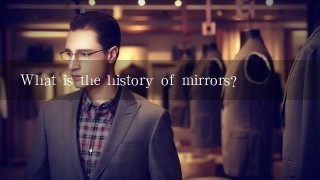What is the history of mirrors?

Mirrors have a long and fascinating history, dating back to ancient civilizations.
Origins in Ancient Egypt:
Mirrors were first created in ancient Egypt around 2000 BCE. They were made of polished metal, such as copper or bronze, and were used for a variety of purposes, including religious rituals, entertainment, and personal adornment. Mirrors were also used in tombs to protect the deceased from evil spirits.
Ancient Greece and Rome:
Mirrors continued to be used in ancient Greece and Rome. They were often made of glass, and were used for a variety of purposes, including religious rituals, entertainment, and social gatherings. Mirrors were also used in public buildings, such as temples and palaces, to reflect the sun and create a more impressive appearance.
The Middle Ages:
During the Middle Ages, mirrors became less common in Europe. This was due to a number of factors, including the rise of Christianity, the decline of religious rituals, and the increasing use of glass and metal in architecture.
The Renaissance:
The Renaissance saw a resurgence of interest in mirrors. Mirrors were used in a variety of ways, including religious ceremonies, social gatherings, and personal adornment. Mirrors were also used in art and literature, and were often depicted in paintings and sculptures.
Modern Mirrors:
Mirrors have continued to be used in the modern era. They are used in a variety of ways, including personal grooming, religious rituals, and entertainment. Mirrors are also used in a variety of industries, such as advertising, construction, and healthcare.
Today, mirrors are used in a wide variety of ways and are an important part of our culture.
Here are some additional facts about mirrors:
- Mirrors can reflect up to 80% of the light that hits them.
- Mirrors can be used to correct vision problems, such as nearsightedness and farsightedness.
- Mirrors can be used to create the illusion of a larger or more spacious room.
- Mirrors can be used to hide imperfections, such as wrinkles and scars.
- Mirrors can be used in art and literature to create a variety of effects, such as realism, symbolism, and humor.





































































